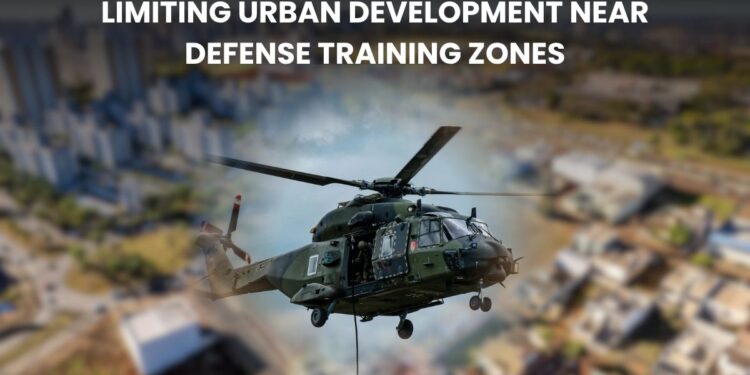The defense training zones are generally away from the busy lives of cities and towns to ensure uninterrupted military training and missions. Hence, limiting the urban development near the training zones is promoted. Let’s see how the US limits it and enhances the training zones.
The Department of Defense, in collaboration with other federal agencies, has been making efforts to limit urban development and protect military readiness. However, housing demands, population, and economic development are calling for urban development near military bases, too.
The authorities are looking to create a balance without disrupting the military training areas and their activities. This is achieved through all stakeholders understanding to live in harmony and meet the needs of the military as well as communities.
Why do US defence training zones need to be protected from urban development?
Let’s see what the reasons are that pushed the US Department of Defense to limit the urban development near defense training zones:
- Public health & Safety:
- The military training areas have aircraft flight paths, live-fire exercises, combat exercises, and hazardous materials that can be harmful to the public.
- The urban development can bring the city close to the training zones, risking public health.
- Noise Conflict:
- The training zones involve aircraft, weapons testing, and other activities that can create noise pollution and disrupt the nearby population, and affect their health.
- Urban development can cause noise pollution and pressure the defense to limit its operations.
- Military readiness:
- Urban development can disrupt military missions, operations, as urban development can limit operations, such as big buildings and towers can affect the air force training.
- Environmental Issues:
- Most of the land near the defense training zones is near wildlife habitats or conserved, so the urban development can create problems for the wildlife and affect the biodiversity.
How does the US limit urban development near defense training zones?
The US DoD and other agencies have started the programs and applied many strategies to restrict the urban development near defense training zones, such as:
- Encouraged compatible land use: The agencies promoted compatible land use around the defense training zones through various programs to ensure it is away from urban development.
- Protected working land: The DoD is protecting and preserving working land, such as farms, ranches, and other areas near the training zones, to ensure it is away from urban development and helps the communities in generating revenue.
- Engage with local communities: The US authorities have taken steps to strengthen the connection with local communities and coordinate with them for military installations to ensure all stakeholders’ views are respected.
- Buffer Zones: The DoD has created and preserved buffer zones under the REPI program that will be the barrier between defense training zones and urban areas.
- Investing in projects protecting military readiness: The DoD has begun funding projects that are implemented to keep the balance between the military and civilians, while protecting the environment.
What are the US programs promoting urban development restrictions around military training areas?
The federal agencies have been taking initiatives and programs to limit the urban development near defense bases, such as:
- REPI:
- The REPI program was designed to protect the military readiness to ensure uninterrupted military training areas. The program has been funding many projects practicing or supporting urban development restrictions near training areas, environmental protection, and climate resilience.
- The military services partner with other stakeholders to establish buffer zones and support the military testing and training.
- Navy and Marine Corps Encroachment Partnering:
- Under the REPI authority, the Navy and the Maine Corps have started using conservation easements, or restricted urban development near the training areas.
- AICUZ:
- The Air Installations Compatible Use Zones ensure the land around the training areas is compatible with defense activities, involves land planning, and uses of land to mitigate risks when the public is near the base.
- ACUB:
- The Army Compatible Use Buffer Program was established to conserve the land near the training zones, engage landowners, and establish buffer zones to restrict urban development that can interfere with military operations.
- Use of Joint Land Use Studies:
- The JLUS studies are used to plan between military installations, nearby communities, and identify the risks that can affect the military and the environment.
The urban development near the defense training zones can affect military operations as well as affect public health & safety, hence it’s important we find the balance with the increasing demand for housing and ensure national security too.










